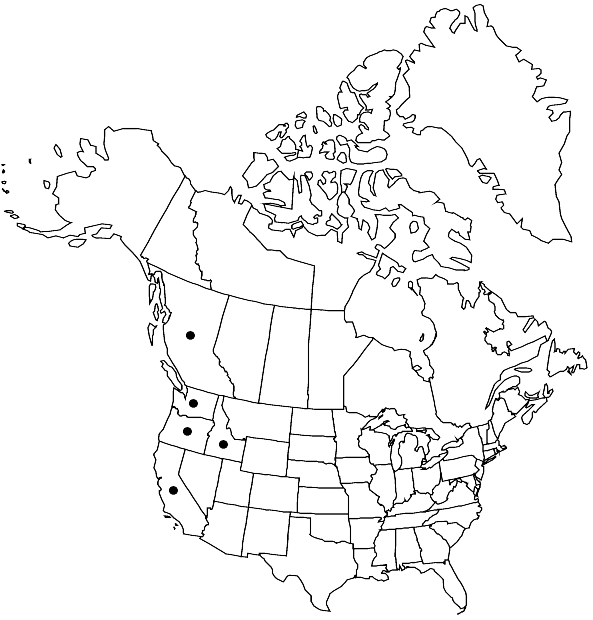Fissidens ventricosus
Mem. Calif. Acad. Sci. 1: 7. 1868,.
Plants to 25 × 3.5 mm. Stem unbranched and branched; axillary hyaline nodules absent; central strand weak. Leaves as many as 35 pairs, lanceolate to oblong-lingulate, acute to obtuse-apiculate; to 5 × 0.9 mm; dorsal lamina narrowed proximally, ending at insertion, not decurrent; vaginant laminae 1/2–2/3 leaf length, equal; margin ± entire, limbate on all laminae, limbidium reaching apex or ending a few cells before apex and a few cells above insertion of dorsal lamina, limbidial cells 3-stratose to 6-stratose; costa ± percurrent, bryoides-type; laminal cells 1-stratose, or variably 2-stratose, smooth, slightly bulging, firm-walled, irregularly quadrate to hexagonal, 8–13 µm, ± twice as deep as wide. Sexual condition probably rhizautoicous; perigonia not seen; perichaetia on elongate stems. Sporophytes 1–2 per perichaetium. Seta stout, to 3 mm, geniculate. Capsule theca emergent, erect, radially symmetric, to 1.2 mm; peristome bryoides-type; operculum 0.4 mm. Calyptra not seen. Spores 23–40 µm.
Habitat: Attached to rocks and other substrates in rapidly running streams, infrequently on wet rocks beside streams
Distribution

B.C., Calif., Idaho, Oreg., Wash.
Discussion
Fissidens ventricosus occurs along the Pacific Coast of North America and at a disjunct site in northern Idaho (see map in R. R. Ireland and W. B. Schofield 1967). It is distinguished by its aquatic habitat, strongly limbate leaves, variably 2-stratose laminal cells, short, thick, geniculate seta, and emergent capsule. Plants usually become black and covered with diatoms. The species might be confused with F. rigidulus Hooker f. & Wilson, but the latter, found in wet sites in the Americas from Chile north to Mexico but not known in the United States, has much smaller laminal cells and a long seta characteristic of terrestrial species. The calyptra of F. ventricosus is cucullate according to Ireland and Schofield.
Selected References
None.
Lower Taxa
"equal" is not a number."/2" is not declared as a valid unit of measurement for this property.
